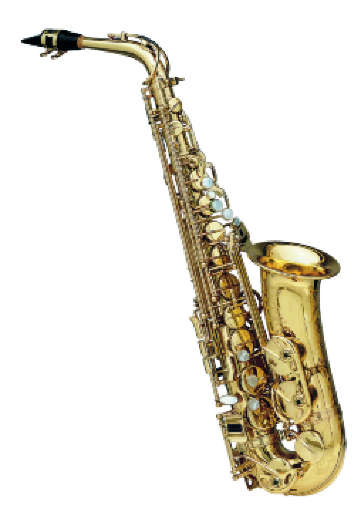Recording brass & reeds
A guide to capturing brass and reed instruments in the studio

Recording brass and reeds

Brass and reed instruments are very harmonically rich, and some have different tonal qualities depending on how hard you blow them. They can also go very loud and have a highly channelled sound port, all of which throws up some distinct challenges for recording.
The room
The requirements for most acoustic instruments are the same in terms of location. You want quite a live, good sounding room, and ideally not too small. Brass and reeds are no exception, but owing to their character and volume, you will need quite a sizeable space.
Mic'ing up brass
As with acoustic guitars, you want to use the best mic you have access to - preferably a good condenser with a cardioid pickup pattern. And also like acoustic guitars, you should dismiss all the stage-mic placements you've seen (microphones practically rammed down the bell of a trumpet, for example) and use your own judgement. It takes some distance for the different frequencies and harmonics to balance out properly, so depending on the room you're in, you'll want the mic anywhere from one to three metres away from the instrument. Also, you want to place the mic slightly to the side, rather than dead in front of the bell, thus avoiding the blast of air and unpleasant undiluted sound. Then it's simply a matter of finding the right balance. Experiment with positioning the microphone above and below the instrument level, and with the distance - further out gives a fuller and more spacious sound.

Mic'ing up reeds
It's quality large-capsule condensers all the way again with reed instruments (time to get out that Neumann U87), but placement is a little more tricky this time. Clarinets and similar instruments fire their output down at the floor, and rely on the reflections from it to give the sound depth. Not only that, but a great deal of the actual sound is produced by the body of the instrument rather than from the output, which makes for some interesting decisions when it comes to mic placement.
Want all the hottest music and gear news, reviews, deals, features and more, direct to your inbox? Sign up here.
For most types of reed instrument, we'd recommend placing the microphone about one or two metres in front of the player, at around head height and pointing towards the bottom of the instrument. This mimics the position from which we actually hear the sound in the real world, and although this straightforward approach doesn't always work in recording, on this occasion it does.
Unlike other reed instruments, the saxophone's bell points upwards, so the best mic placement is slightly different. You should try to have the microphone about a metre away, above and in front of the sax, and point it at the middle of the instrument. From that point on it's 'headphones on and tweak it' time.

Recording a section
Get a few brass and woodwind players in the same place and you've got yourself a section. But how do you record them? The sheer volume of these instruments means that giving each its own mic is a waste of time. Instead, you want to achieve the balance as you record, so get your players in a line and set up the mic about three metres or so in front them (slightly above, pointing down). You can also try a stereo pair of mics, but experiment to get the best placement.
You should also try moving the players around a little, to achieve a good tonal balance. We'd recommend pulling your brass back behind the reed instruments - a foot or so ought to do it - as this will help to balance the mix of sounds.
Pro Tips
If you're getting too much mechanical noise, you can try placing a mic behind the player too - their body will block the valve and key noise. Other than that, you need to ask the player to try and stop it!
If your players are swinging their instruments around as they play, simply place some dummy mics right in front of (and under) them and ask the performers to make sure the bells stay right over the dummies.
MusicRadar is the number one website for music-makers of all kinds, be they guitarists, drummers, keyboard players, DJs or producers...
- GEAR: We help musicians find the best gear with top-ranking gear round-ups and high-quality, authoritative reviews by a wide team of highly experienced experts.
- TIPS: We also provide tuition, from bite-sized tips to advanced work-outs and guidance from recognised musicians and stars.
- STARS: We talk to musicians and stars about their creative processes, and the nuts and bolts of their gear and technique. We give fans an insight into the craft of music-making that no other music website can.
